What does it mean?
Srah Srang, also spelt Sra Sang, Sras Sran, or similar, and pronounced "Sra Srong" means "Royal Bath". Unlike a "Banteay" reservoir with dams, a "Srah" is a manmade basin for ritual bathes, usually constructed as a pool in an artificial depression. But in the case of the Srah Srang it is a combination of both.
You can easily recognize the earth bank at the west side, as the road is below its level. It is not clear whether this tank was only a functional building used for irrigation purposes or a religious edifice, a lake temple. Originally there was a small shrine on an artificial island close to the center, but its stone foundations can only be seen in the dry season, when the water level is low.
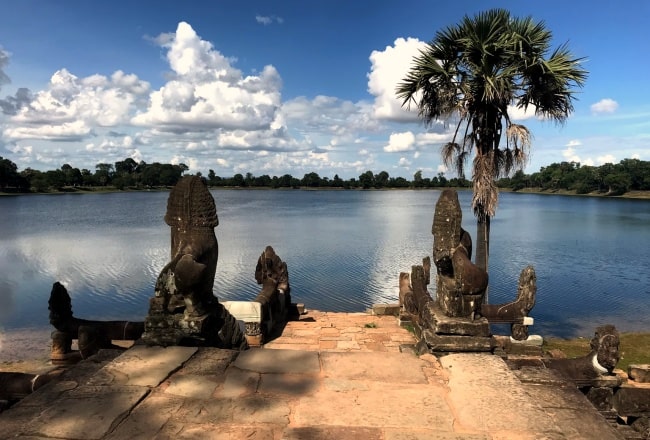
Srah Srang Overview
The Srah Srang lake is 700 metres long and 350 metres wide. It was built in the 10th century by King Rajendravarman II, who is the founder of Pre Rup and East Mebon and some smaller temple structures in the vicinity of Srah Srang. As in the case of the statetemples Pre Rup and East Mebon the architect of the lake Srah Srang was Kavindrarimathana. The original laterite structure can still be seen below the sandstone crown of the western embankment.
Close to the main entrance of Banteay Kdei there is a sandstone platform jutting out into the lake, dating from the Bayon period (around 1200), contemporary and maybe connected to the nearby temple Banteay Kdei. It is decorated with Naga balustrades and two lion guradians. (2013 the sculptures were removed for preservation works at the platform.)
It served as a landing stage, but it is called "Royal platform", as it is believed to have been used by the royalty and nobility to watch ceremonies. During the reign of King Jayavarman VII (1181- ca.1220), who remodeled the reservoir using sandstone blocks for the embankments, annual regattas or boat races were cerebrated here, during water and fertility festivals at the end of the rainy season.
The platform today is a kind of "Angkor's sunrise point". However, in the late afternoon it is a delightful area as well. There is no ticket checkpoint at Srah Srang, only at the opposite side of the road in front of Banteay Kdei's entrance gate. Nevertheless, admission to the Small and Grand Circuit roads, meeting at Srah Srang, is not free of charge, so take an Angkor ticket with you.
Below is the glimpse of Srah Srang in 360o viewing:
What to see at Srah Srang
Embarkation terrace
During the reign of King Jayavarman VII in the second half of the 12th century a number of alterations were made to the site. The earth embankment surrounding the lake was replaced by laterite steps, allowing easy access to the water.
A multi-tiered embarkation terrace with Naga balustrades was built on the West side of the pond. The terrace was probably used to embark on a boat to the artificial island in the center of the Srah, where once stood a sanctuary, of which virtually nothing remains today. On the cruciform terrace stood a wooden pavilion which has long gone comprising of two inner courtyards surrounded by galleries. Flanking the top of the stairs to the jetty are two large stone lions overlooking the water.
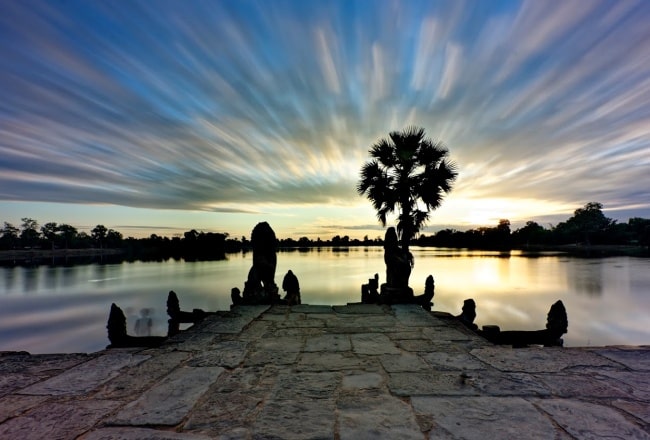
Sunrise at Srah Srang Lake
Offering a breath-taking sunrise view with fewer crowds, Srah Srang has a quieter waterside than the reflection pools of Angkor Wat. The trees surrounding the water’s edge offer a beautiful reflection in the tranquil waters as the sun’s colours begin to fill the sky.
On the western edge of Srah Srang you will find a multi-tiered terrace. Adorned with naga balustrades, lions and other Khmer carvings, this is the best spot to watch sunrise over the lake.
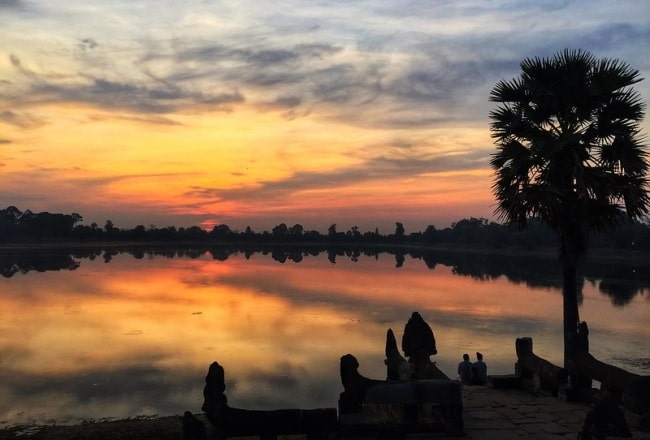
Sunset at Srah Srang Lake
That said, there is a viewing platform right across from Banteay Kdei that is a popular sunrise spot, but, if you head to Srah Srang from the opposite end, closest to Pre Rup, you can get just as spectacular of a view for sunset, with a lot less people.
While there’s no temple at Srah Srang, you’ll get to see a perfect reflection on the water of the sun setting between the trees. You can sit in the grass on the bank of the reservoir, hang out, and watch the sunset over the water without having to battle crowds of tourists.
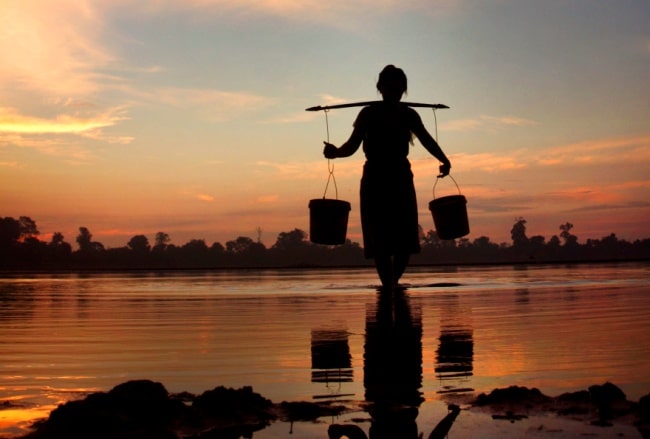
Location
Srah Srang is located on the east side of Banteay Kdei temple. To the north west is Kutisvara temple and to the east is Pre Rup. Both the grand circuit and small circuit tour take a clockwise direction around the temples with Srah Srang usually being the last place to visit.
Check the location of Srah Srang on Google Map below for your reference:
Getting There
If you are coming from Siem Reap town or Angkor Wat, then you can head east going past Prasat Kravan. About 1km after Prasat Kravan, you’ll see the large pool of water on the right side with Banteay Kdei on the left side. If you’re coming from Ta Prohm, then head east for a few hundred metres before turning right to the south. You can’t miss the large expanse of water!
If you’re coming from the East Baray or Banteay Samre, then head towards Pre Rup and you’ll see Srah Srang on the left side about 1km after Pre Rup temple.
Best time to visit Srah Srang
Sunrise is a popular time to visit Srah Srang, as it offers a peaceful alternative to the crowded Angkor Wat. You can either enjoy the majestic view of sunset at Srah Srang
Srah Srang Tours
As stated before, both the Small Circuit Tour and the Grand Circuit Tour often end with a visit to Srah Srang. If you’re aiming to avoid the crowds at sunset, you might want to ask your guides to do the circuit “back to front” and visit Srah Srang early in the morning.
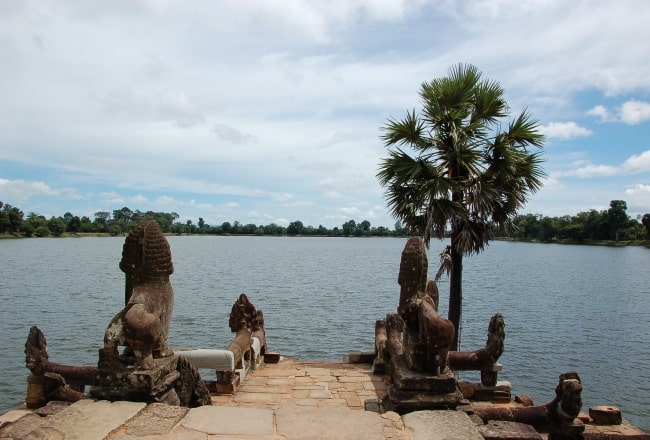
Accommodation
There are no hotels in the park and you can’t stay near Srah Srang. Most visitors will find a hotel in Siem Reap town. The town has grown in recent years to become a large tourist hub to support millions of visitors. There are hotels of all sizes and budgets and you’ll easily be able to find a place to stay at any time of the year.
Here is our Siem Reap Travel Guide
Why Visit Srah Srang?
This is one of the most popular spots to set the sunset and the sun will light up the whole reservoir. The landing stage offers the perfect place for tourists to wait and watch the sun go down.
The Layout & Design of Srah Srang
Srah Srang has all the elements of a romantic setting, with its surrounding greenery, its grand landing stage and sweeping views across the water, reflecting a sunrise or a setting sun. Serpent balustrades that lead down to the water from the platform are flanked by two majestic lions.
Visitors will also find a large garuda riding a three-headed serpent, which rests on a platform along with other mythical creatures. The Bayon-style architecture so favoured at the time, was the work of King Rajendravarman’s preferred architect, Kavindrarimathana.
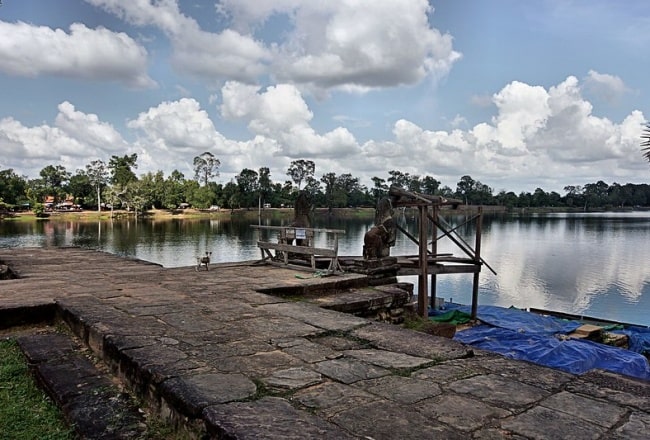
History of Srah Srang Temple
Although the name suggests its purpose was for royal bathing, inscriptions found on the site, dating back to the mid-10th Century, point to a more inclusive intention – providing water ‘for the benefit of all creatures’.
The possibility that there was once a temple built on an artificial island in the centre of the 700m x 300m reservoir was discovered when stones, similar to those used for East Mebon, were found. Changes to the structure of Srah Srang occurred in the 12th Century when Jayavarman VII added a terrace to its western side and lined the pond with sandstone.
The additions to the original structure are likely to have coincided with the East Baray having accumulated sediment, causing it to cease functioning efficiently. An alternative source of water for the population would have been required – Srah Srang being a convenient choice.



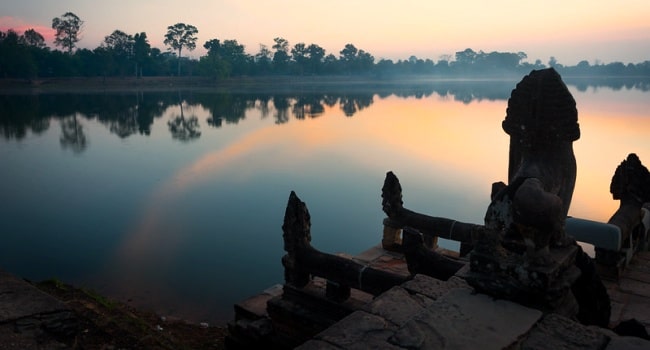

 02/01/2026
02/01/2026






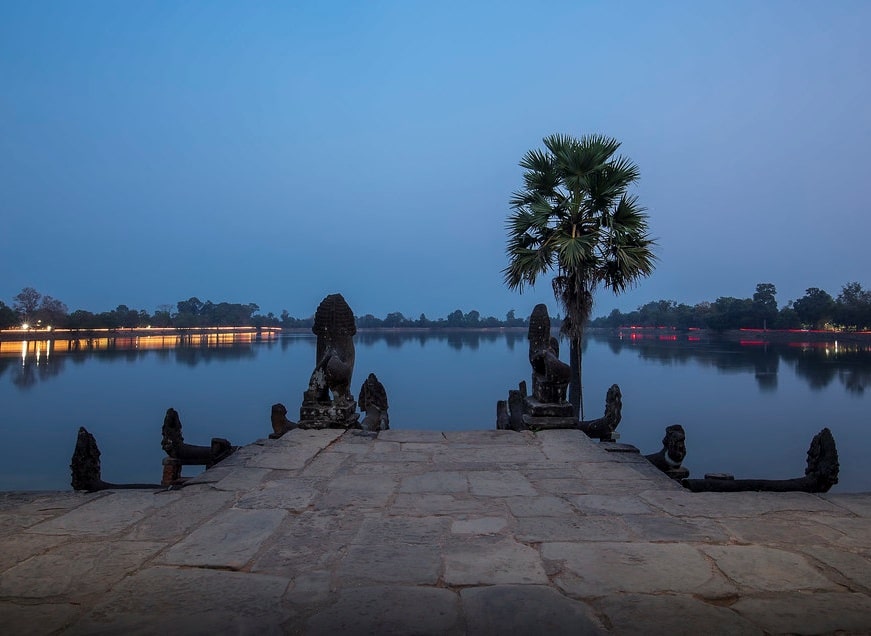

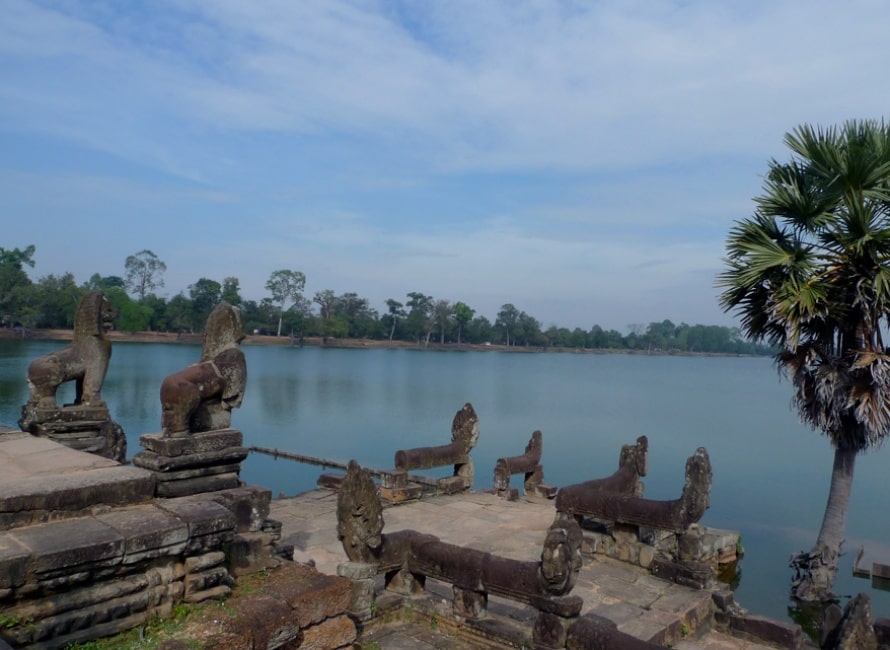
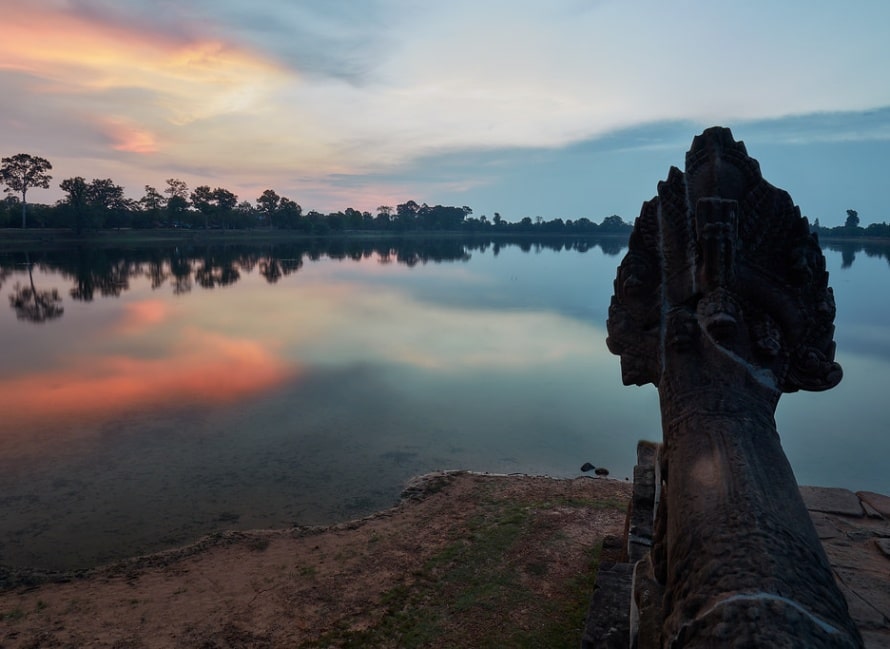
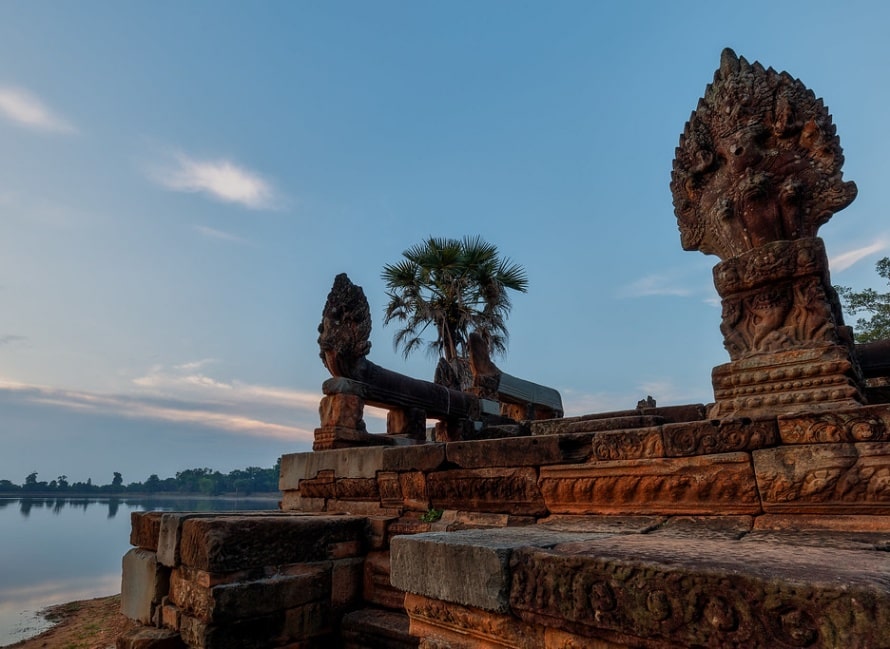
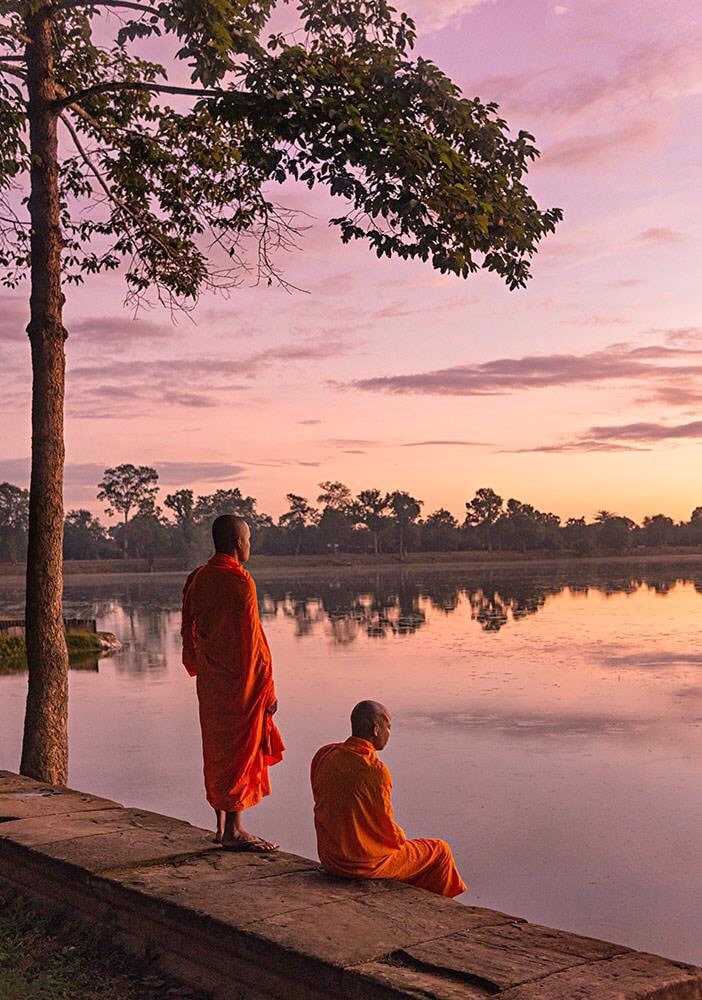
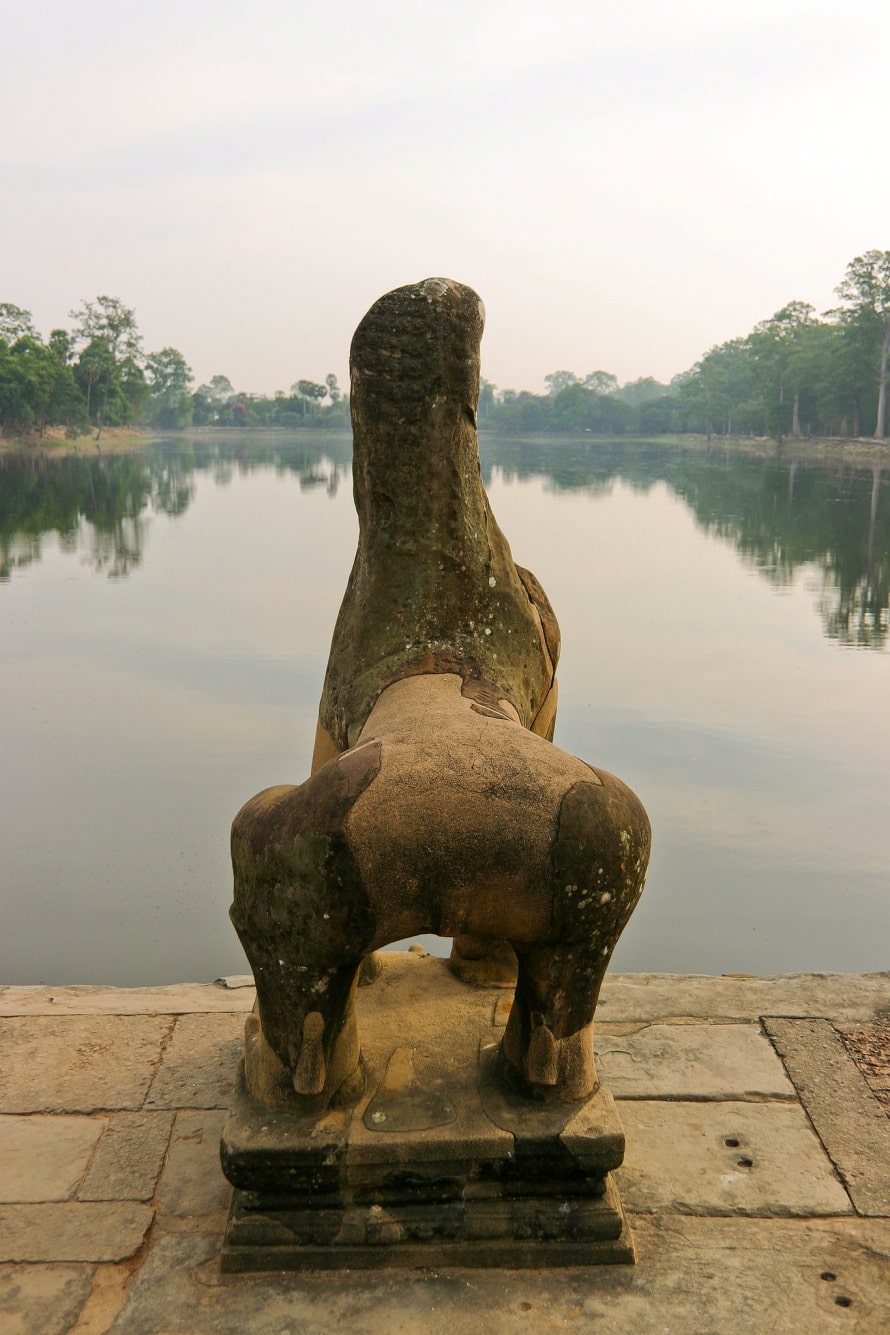




















Jolie LIEMMy name is Jolie, I am a Vietnamese girl growing up in the countryside of Hai Duong, northern Vietnam. Since a little girl, I was always dreaming of exploring the far-away lands, the unseen beauty spots of the world. My dream has been growing bigger and bigger day after day, and I do not miss a chance to make it real. After graduating from the univesity of language in Hanoi, I started the exploration with a travel agency and learning more about travel, especially responsible travel. I love experiencing the different cultures of the different lands and sharing my dream with the whole world. Hope that you love it too!